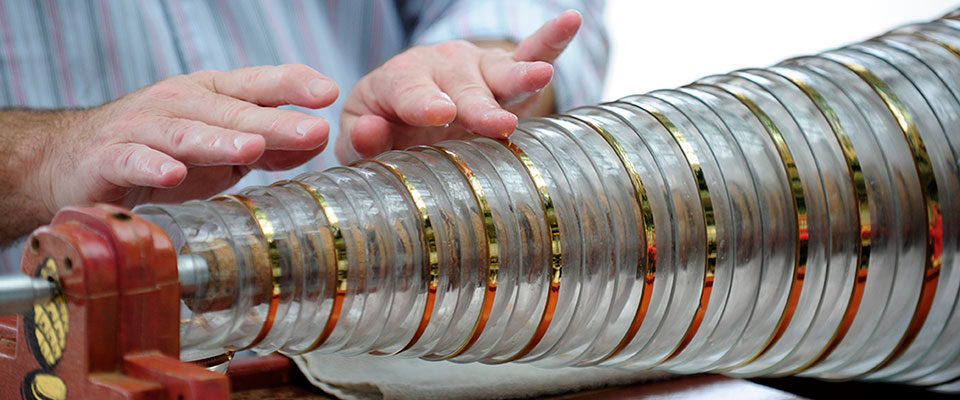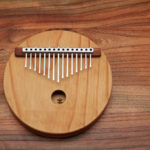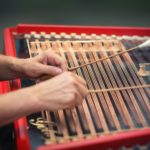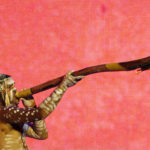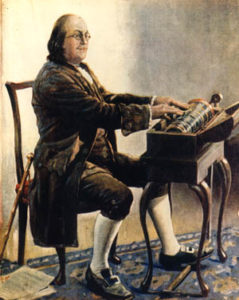
In the midst of the holiday season, I thought it was appropriate to pick a semi-festive instrument for December’s installment.
Have you ever learned how to make a sound by running your finger along the rim of a wine glass? As a kid, I was pretty impressed with a few of my relatives who could work together to make a sort of song. The glass armonica is a large scale, mechanical method of playing the rims of many wine glasses.
Benjamin Franklin invented the glass armonica in 1761 after attending a glass harp concert performance in England. The glass harp is an arrangement of wine glasses filled with various amounts of water. The more water in the glass, the lower the tone.
Franklin was enthralled by the sound of the glass harp, but thought the tuning process and the effort it took to move from glass to glass was far too cumbersome. Therefore, he came up with a better system with practically the same sound: the glass armonica.
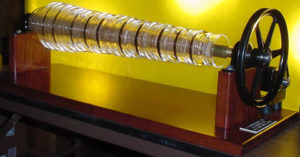
Glass bowls are arranged on an iron spindle; accidentals (or, the black keys of a piano) are generally rimmed in gold. The size of bowls range from a shot glass (highest tone) to a moderate mixing bowl (lowest tone). The spindle is attached to a foot pedal to allow the operator to spin the glass. Players must keep their fingers wet to produce sound, so they place small bowls of water between them and the instrument for frequent re-wetting.
The word “armonica” is inspired by the Italian word “armonia,” meaning harmony. Franklin named the glass armonica before the well-known mouth organ “harmonica” was invented in Germany in 1821. Although glass armonica is the intended name, it is also known as glass harmonica, bowl organ, and hydrocrystalophone.
The glass armonica was never a widely used instrument, although it gained enough popularity to interest composers Mozart and Beethoven. Each composer wrote pieces specifically for the glass armonica. Below is an excerpt of Mozart’s Adagio and Rondo played by French artist Thomas Bloch.
Since there was no good way to amplify the instrument in the 18th century, popularity declined as symphony orchestras and concert halls became prominent in the world of music. Beyond the practical reasons for leaving the glass armonica behind, there were rumors that the instrument was dangerous to one’s health.
Some believed that players contracted lead poisoning from the coating of the glass bowls. Others were afraid that the instrument’s timbre caused nerve damage. In 1798, a man named Friedrich Rochlitz wrote, “[the glass armonica] plunges the player into a nagging depression and hence into a dark and melancholy mood, that it is an apt method for slow self-annihilation.”
To this day, there are only ten or twelve skilled glass armonica players in the world. The notes are laid out similar to a piano, but the technique is much more challenging. The instruments are also rare, so they are not widely available for people to use.
Personally, I find that this version of Dance of the Sugar Plum Fairy from “The Nutcracker” puts me in the opposite of a dark and melancholy mood. And William Zeitler, a modern glass armonica player, seems perfectly happy in his Ben Franklin-impersonator garb. Take that, Friedrich Rochlitz.
If you happen to have a wide array of wine glasses and glass dishes at your holiday gatherings, try making your own version of a glass armonica! If not, just add Dance of the Sugar Plum Fairy to your holiday playlist.

